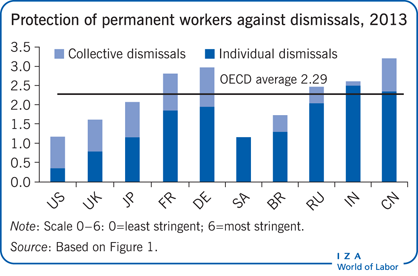Elevator pitch
Laws on hiring and firing are intended to protect workers from unfair behavior by employers, to counter imperfections in financial markets that limit workers’ ability to insure themselves against job loss, and to preserve firm-specific human capital. But by imposing costs on firms’ adaptation to changes in demand and technology, employment protection legislation may reduce not only job destruction but also job creation, hindering the efficient allocation of labor and productivity growth.

Key findings
Pros
Employment protection legislation can be justified by the need to protect workers from arbitrary actions by employers.
Imperfections in financial markets limit the possibilities for workers to insure themselves against dismissal. Employment protection legislation provides such insurance.
Employment protection legislation can promote long-lasting work relationships that encourage workers’ commitment to a firm and the firm’s investment in human capital.
In countries lacking unemployment benefits, severance pay can sustain job search by dismissed workers and improve job matching.
Cons
By raising labor adjustment costs, stringent employment protection reduces job creation as well as job destruction and weakens firms’ ability to exploit new technologies and markets.
Stringent employment protection reduces the ability of economies to redirect labor resources to the most productive uses.
Liberalizing temporary contracts while retaining stringent regulation of permanent contracts contributes to labor market segmentation.
In many developing and emerging economies, stringent employment protection is weakly enforced, and many workers in the informal sector are unprotected.